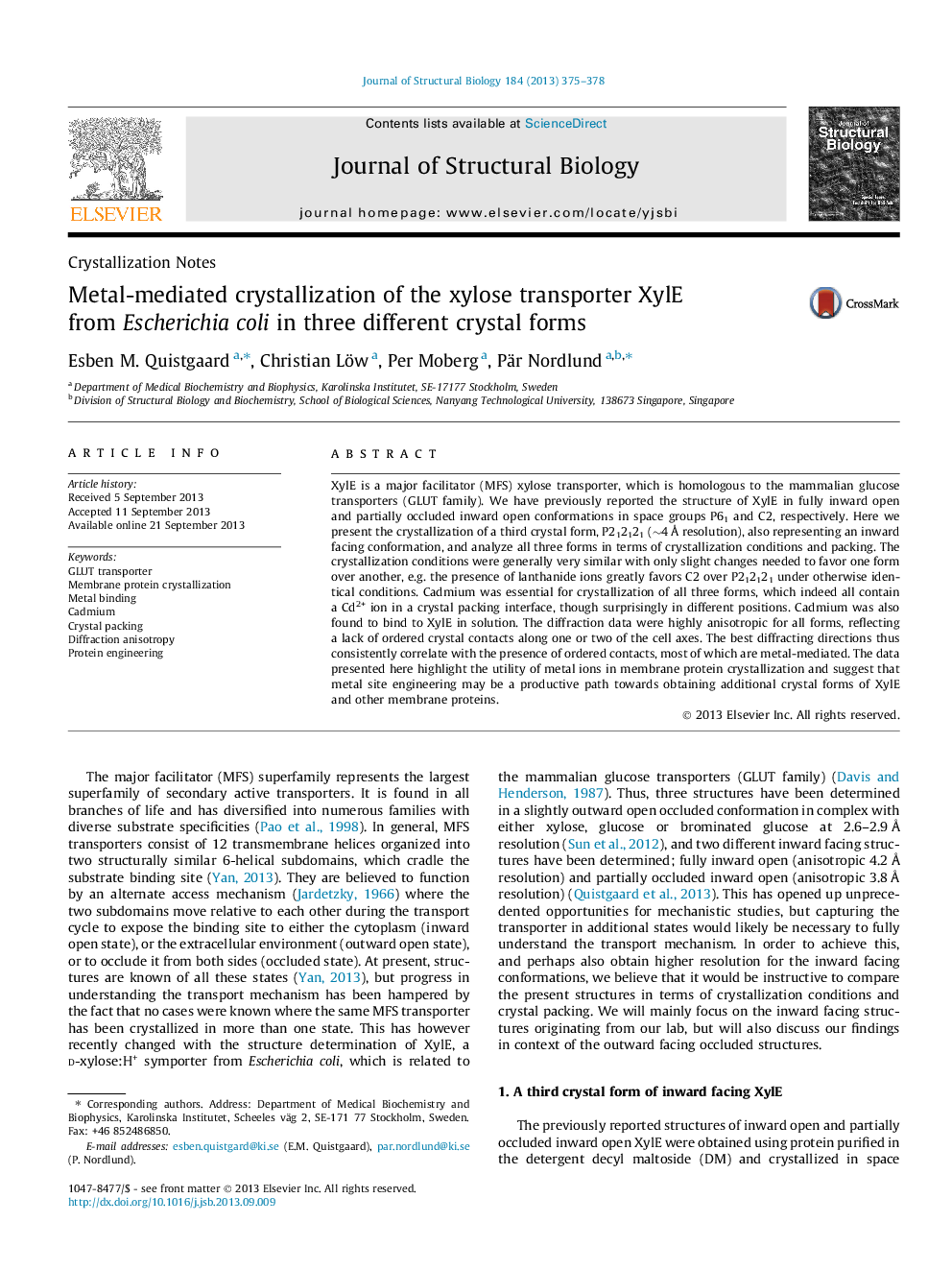| Article ID | Journal | Published Year | Pages | File Type |
|---|---|---|---|---|
| 5914142 | Journal of Structural Biology | 2013 | 4 Pages |
Abstract
XylE is a major facilitator (MFS) xylose transporter, which is homologous to the mammalian glucose transporters (GLUT family). We have previously reported the structure of XylE in fully inward open and partially occluded inward open conformations in space groups P61 and C2, respectively. Here we present the crystallization of a third crystal form, P212121 (â¼4Â Ã
resolution), also representing an inward facing conformation, and analyze all three forms in terms of crystallization conditions and packing. The crystallization conditions were generally very similar with only slight changes needed to favor one form over another, e.g. the presence of lanthanide ions greatly favors C2 over P212121 under otherwise identical conditions. Cadmium was essential for crystallization of all three forms, which indeed all contain a Cd2+ ion in a crystal packing interface, though surprisingly in different positions. Cadmium was also found to bind to XylE in solution. The diffraction data were highly anisotropic for all forms, reflecting a lack of ordered crystal contacts along one or two of the cell axes. The best diffracting directions thus consistently correlate with the presence of ordered contacts, most of which are metal-mediated. The data presented here highlight the utility of metal ions in membrane protein crystallization and suggest that metal site engineering may be a productive path towards obtaining additional crystal forms of XylE and other membrane proteins.
Related Topics
Life Sciences
Biochemistry, Genetics and Molecular Biology
Molecular Biology
Authors
Esben M. Quistgaard, Christian Löw, Per Moberg, Pär Nordlund,
